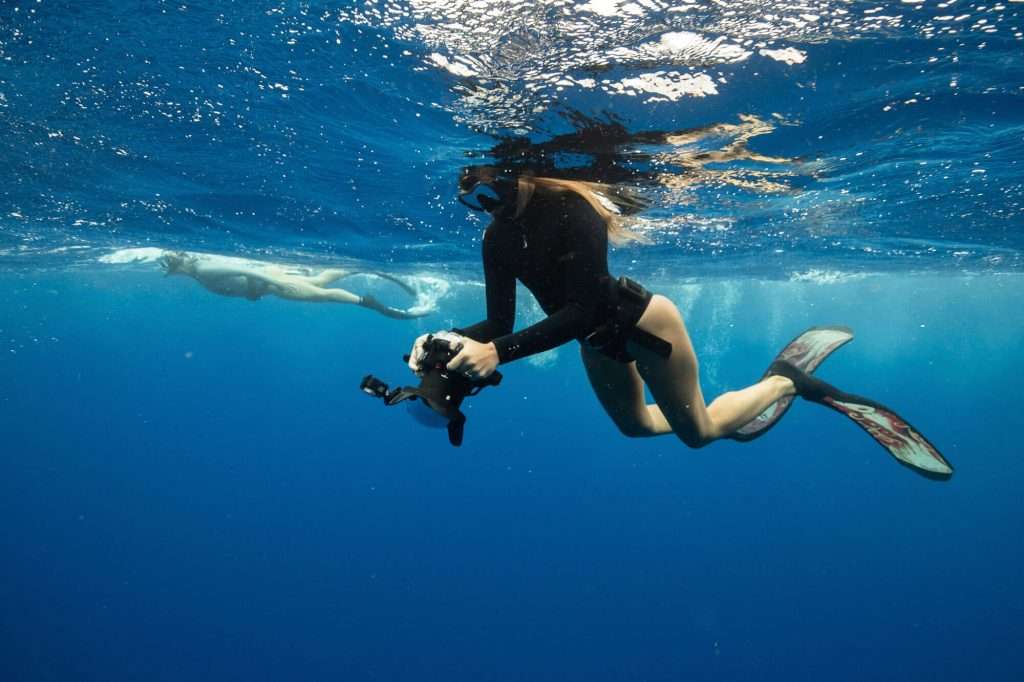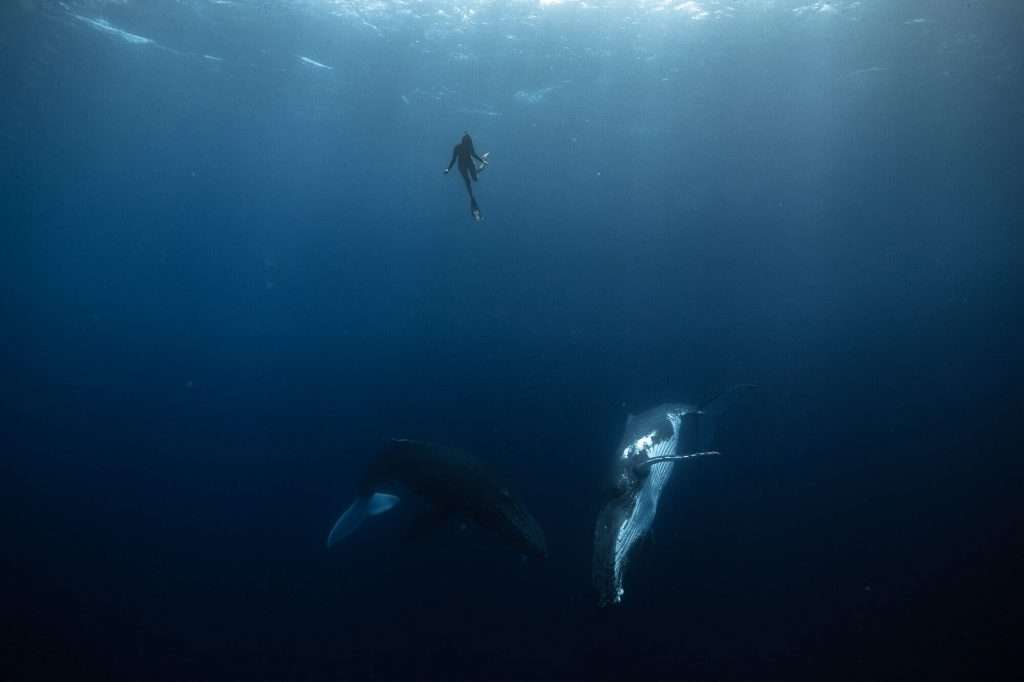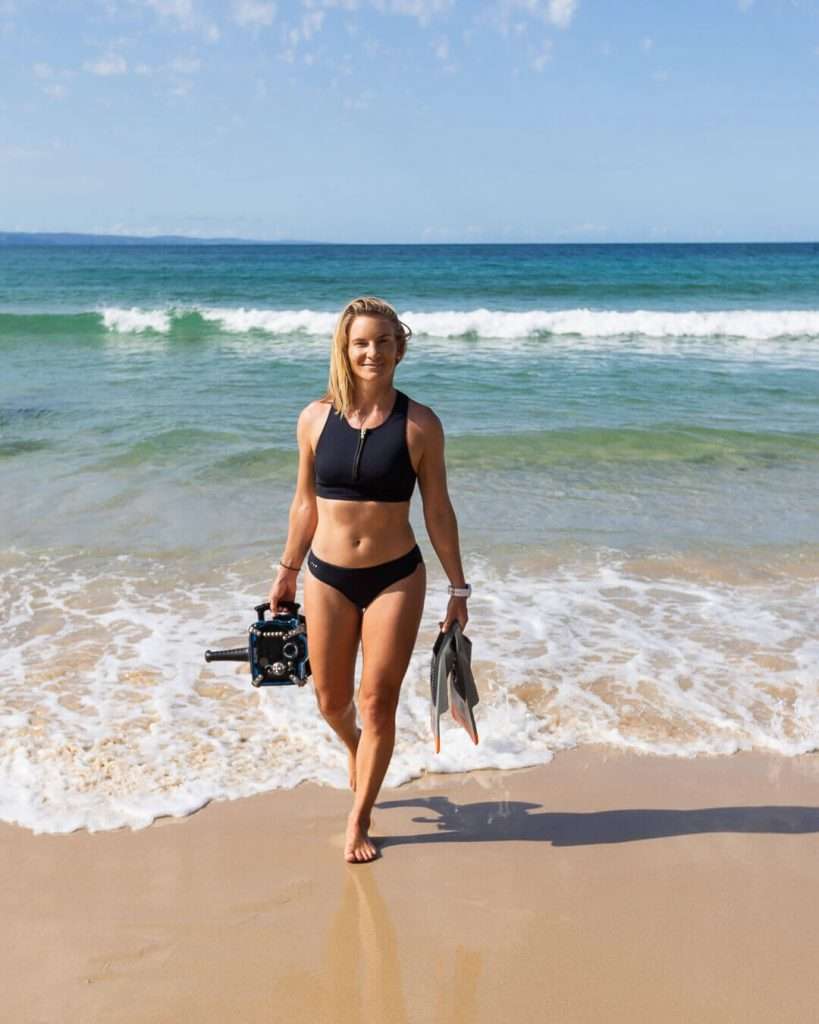Go SLO, Live Creative
As advocates for a clean and healthy ocean, we see the important role that marine photography has played to raise awareness of key ocean-related issues. Online platforms have enabled underwater creatives to shine a light on the beauty and wonder of the sea.
We interviewed Hannah Prewitt, a freelance photographer and surfer based on the Sunshine Coast of Queensland, Australia, we asked about her journey and inspiration to start underwater photography.
According to NOAA, 95% of the Earth’s underwater oceans remain unexplored. Marine life is beautiful, with an estimated 50-80% of all life on earth is found under the ocean surface and with the oceans contain 99% of the living space on the planet, there is so much left to explore and discover.
Following the heartbreaking recent news of the Mauritius Oil Spill, we can already see having disastrous effects on our ocean, and the beautiful marine wildlife.
It is crucial that we continue to drive change and focus on preserving marine conservation. Charities like the Marine Conservation Society, the UK’s leading marine charity, aim to ensure our seas are healthy, pollution-free and protected. Similarly, this is a crucial part of SLO’s DNA.
Did you know that coral are known as “rainforests of the sea,” and they cover less than 1% of the ocean but are home to almost 25% of all known marine species! Unfortunately, 25% of coral reefs are irrevocably damaged. Read our Coral Reef Crisis Guide- Facts & Figures.
Since the architecture and chemistry of coral are very close to human bone, coral has been used to replace bone grafts in helping human bones to heal quickly and cleanly.
Did you know that Green sea turtles have a more plant-based diet and eat seagrass? By keeping seagrass short, they prevent it from getting tall and harming other marine creatures.
An estimated 110 million years is how long sea turtles have existed on Earth, which means they once shared the planet with T-Rex and other dinosaurs.
Unfortunately, researchers found there was a one in five chance of death for a turtle who consumed just one item – rising to 50% for 14 pieces, and this will only increase with the increase of single-use PPE.
The ocean is an incredible place to fuel creativity. The eye-opening imagery from Ocean photographer 2018 winner Tanya Houppermans, is a perfect inspiration, as well as, the beautiful waves paintings, by Vanessa Mae, inspiring us to go out and surf.
“We all need somewhere to go to where we can feel unencumbered, and immersing myself in nature, particularly the water, is where I find my peace.” – Tanya Houppermans for Oceanographic Magazine
The role that whales play in the ocean is important. Whales are at the top of the food chain and have an important role in the overall health of the marine environment. Whales play a significant role in capturing carbon from the atmosphere; each great whale sequesters an estimated 33 tons of CO2 on average, thus playing their part in the fight against climate change.
- Images by Photographer Karim Iliya
- Charyse dancing with whales wearing our Surf Leotard made in Italy with 2mm Yulex Pure.
This ‘ARTivism’ can be the bridge between the pressing environmental issues and the general public, to jumpstart individuals and communities into positive action for our oceans.
Be sure to check out these 6 Artists Who Use Their Art to Promote Ocean Conservation.
An interview with Underwater Photographer, Hannah Prewitt
What inspired you to start water photography?
I’ve always been an ocean person, having studied Marine Biology at University and working as one for many years. So I was always keen to capture the amazing things I saw underwater. But I properly got into photography when I actually gave up marine biology and started learning to surf. I was fortunate enough to be working in the Maldives at the time and I met the professional surf photographer Peter ‘Joli’ Wilson who started to teach me some things about photography. Back then when I was a beginner surfer, photography was my way of still being involved in surfing when the waves were too big for me, as I could sit on the boat and take photos. Once I’d bought some decent equipment, I was keen to get a housing so that I could start taking photos in the water as well.
What is your daily inspiration/motivation to get out there and create in the water?
My inspiration changes all the time. I think it’s important to note that some days I just don’t have any motivation and struggle to find inspiration anywhere. But that’s the cycle that creatives go through and it always comes back. It usually comes from nature – I live close to the beach and some beautiful point breaks so there’s always something to shoot. I don’t want to miss out if the water is really clear or if the surf is really good so that’s enough motivation to get me to go out and shoot again, but I also find a lot of inspiration from images online. I always have a mood board of images from other photographers that I love and perhaps want to try to recreate with my own spin. I’ve also recently started shooting with a few models, which is great because you can feed off of their energy and inspiration too.
I think it’s important to note that some days I just don’t have any motivation and struggle to find inspiration anywhere. But that’s the cycle that creatives go through and it always comes back.
What advice would you give others who may be inspired to start ocean photography?
The main piece of advice I would give if you want to transition into ocean photography is to learn about the ocean first. Make sure you’re comfortable being in the water, you understand different conditions, and you can recognise currents and rips. Shooting in the ocean is a whole different ball game to shooting on land, so if you’re able to do a workshop or get someone to come with you, especially the first few times, then I would highly recommend doing that.
I think I would also recommend you ask yourself what is your “why”. If you just want to get into ocean photography to try and grow a following online or to copy other people’s images, then that’s not a good place to start. It’s a pretty big investment to get a housing for your camera so you have to be in it for the right reasons.
The main piece of advice I would give if you want to transition into ocean photography is to learn about the ocean first.
If this has inspired you to start your own catalogue of ocean-inspired creativity, whether that be marine photography or sitting behind an easel. Below is a checklist to kickstart your new-found hobby:
So go ahead and experiment with different paints, take your camera underwater and explore the beautiful ocean, whilst raising awareness of marine wildlife. If you don’t feel like you have a creative flair, well please continue to spread awareness of the disastrous effects on marine life and please support just some of the charities listed below.
EXPLORE OUR SUSTAINABLE SWIMWEAR:















